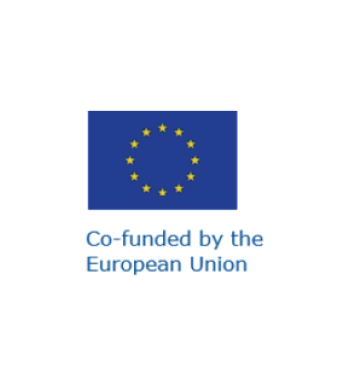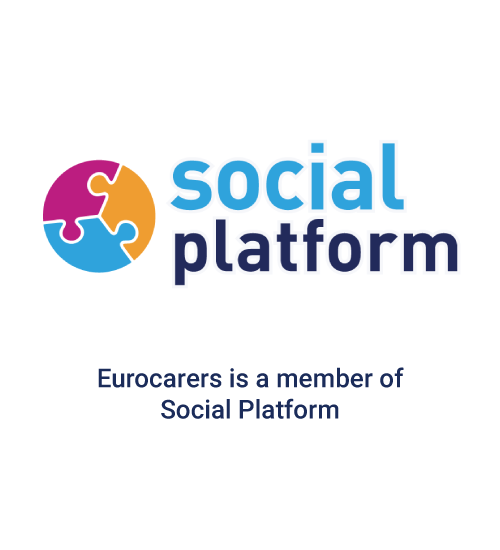SLOVENIA

Slovenia is one of the most rapidly ageing countries in the EU, and health spending as a share of GDP is forecast to increase in the coming years. In the period 2013-2060 the share of people aged 80+ in the Slovene population is expected to grow from 4.5% to 12.3% (EU-28: 5.1%-11.8%), i.e. to more than double with most of the growth happening before 2045. At the same time the share of people 85+ will expand by more than a factor 3.5 from 1.9% to 6.9% (EU-28: 2.3%-7.0%), and the share of people aged 80+ and 85+ among the people above 65+ will rise noticeably from 26.4% to 41.9% (EU-28: 27.8%-41.5%), and from 11.0% to 23.6% (EU-28: 12.9%-24.6%), respectively.
Over the same period of 47 years the old age dependency ratio measured as 65+ as percentage of the 20–64-year-olds will rise from 26.9% (EU-28: 29.9%) to all of 58.3% (EU-28: 55.3%).
The health of the Slovenian population continues to improve, although gaps in life expectancy by gender and socioeconomic groups persist.
Life expectancy for men and women at age 65 is projected to rise from 16.4/20.2 years (EU-27: 17.2/20.7) in 2010 to 21.9/25.3 years (EU-27: 22.4/25.6) in 2060. From 2005 to 2012 healthy life expectancy for men increased by 0.1, for women decreased by 4.5 years, respectively.
The country also faces a major challenge with the projected growth of long-term care expenditure and the need for a shift in care models. These are projected to pose fiscal sustainability risks in the medium to long term. Under an assumption of no policy change, the Ageing Report scenario suggests that public expenditure as share of GDP would rise from 0.9% to 1.9% (EU-27: 1.6%-3.1%) by 2070. The impact of a progressive shift from the informal to the formal sector of care in Slovenia would entail an estimated increase by 137% in the share of GDP devoted to public expenditure on long-term care (128% on average for the EU27).
After long lasting discussions and numerous drafts, Slovenia finally adopted the Long-Term Care Act in December 2021. The act introduces novelties, such as one-stop shops, new services for preserving users’ independence, newly defined care categories and a new assessment tool for evaluating the level of LTC needs. It represents an improvement compared to the previous regulatory framework where LTC was the responsibility of the Ministry of Health and was regulated under different sets of legislation, including pensions, health care, as well as social and family care.
Under the new system, a person’s need for LTC will be evaluated on the basis of eight criteria: mobility in the home environment, cognitive and communication skills, behaviour and mental health, self-care, ability to cope with any disease and treatment, usual activities and social contacts, ability to act outside the home environment, and household activities. Thus, the “social component” is more present in the new system, compared to the old one where the evaluation and LTC rights were defined in terms of the medical needs only.
The Act defines non-monetary and monetary rights regarding LTC. The non-monetary rights are to residential care, community care and a family carer (a family member with the same residence as the user, who leaves the labour market or unemployment to take care of the user). Each user is free to choose among these options.
One-stop shops are located at the regional offices of the Health Insurance Institute of Slovenia (HIIS), where a potential LTC user can receive the necessary information and can apply. The users are classified into five care categories depending on the level of care they need. An Appendix to the Act defines the value of services for which users in each category are eligible. The value ranges from €340 per month for users with the least care needs to €1,870 for those with the greatest care needs. An implementation plan of recommended services is prepared for each user.
The Act distinguishes between five groups of services: three which already exist (related to help with activities of daily living and nursing care) and two new ones (e-care services and services to strengthen and sustain independence). A LTC coordinator, designated by the government and employed on a permanent basis, coordinates the provision of services. The HIIS acts as the payer of services to public and private providers and sets the prices of LTC services.
The Act introduces compulsory LTC insurance. Insured persons are all persons aged 18 and over who are included in the compulsory health insurance scheme in Slovenia.
While the Act has come into force, certain articles, crucial to the legislation, will only apply at the beginning of 2023 or mid-2024. For example, the conditions for LTC insurance, such as contribution rates and a contribution base, will be set out in another act. Until its adoption (expected in June 2025), 3.8% of funds collected by the HIIS and 2.2% of funds collected by the Pension and Disability Insurance Institute of Slovenia will be used to finance LTC. LTC is also financed through transfers from the state budget
Although a step in the right direction, the new Long-Term Care Act faces significant criticism from stakeholders. Among other things, it has been criticised for not taking fully into account the recommendations and conclusions of the pilot project initiated in 2018 to test some proposed solutions (e.g. one-stop shops, new services for preserving users’ independence and a new assessment mechanism for entry into the LTC system) and co-funded by the European Commission. Some say that the Act postpones rather than resolves the main problem that delayed its adoption for so long: how to ensure stable financing of LTC.
Despite the scepticism, the adoption of the Long-term care Act was long overdue since the population has been ageing and the number of elderlies needing LTC has been increasing. Thus In 2017, there were 64,433 long-term care recipients in the country – i.e. a 3% increase compared to the previous year. The share of recipients receiving long-term care in institutions remains very high (35.5% or around 22,900 people). They were followed by home care recipients (34.9% or almost 22,500 people), and recipients of cash allowances only (28.7% or around 18,500 people)[1].
Institutional care is traditionally well developed in Slovenia, with a trend towards privatisation in the last 15 years.
The burden of informal care for dependent relatives is high in Slovenia and falls primarily on women. The number of people depending on others to carry out activities of daily living will increase significantly over the coming 50 years.
[1] SI-Stat Data Portal, 2019
Number of carers
Traditionally, the family plays a very strong role in ensuring good living conditions − not only in terms of care and finances, but also with regard to the housing issue (Cirman, 2006). Hence, there is a very strong tradition of multigenerational households in Slovenia. As regards informal care, the family is the main provider of care for older people in Slovenia. Most Slovenes (60%) consider it the children’s responsibility to care for older people; this figure is higher than the EU average (48%) (EC, 2007). A Eurobarometer study has shown that almost 40% of Slovenes see cohabitation with an old, disabled family member as the solution to a family care-provision issue.
Survey data on informal carers in the Slovene population, aged 50 years and over, show that about 220,000 inhabitants of Slovenia regularly care for their closest persons. Women are overly represented in among both carers and care recipients (over two thirds).
There is a clear need for training of, and more support to, informal carers, like respite services, an allowance compensating for (a part of) the cost of respite services, social security insurance of informal carers, etc. More flexible employment arrangements are also needed for employees with long-term care obligations. It remains to be seen whether the national transposition and implementation of the EU Work-life balance Directive for parents and carers[1] will introduce positive changes in this regard.
[1] OJ L 188, 12.7.2019, p. 79–93
Social inclusion of carers, access to education and employment
Currently there is no care leave system for long-term care of the elderly. Adequate workplace arrangements for informal carers are not available.
The parent (or other person fulfilling the parental role) who is taking care of a child below the age of 18 years with a severe physical disability or a moderate or heavy mental disability, has the right to work part time. The number of caring hours must nevertheless amount to at least a 50% part-time equivalent. The employer may not reject such a request.
Carer’s Allowance
In some specific cases, partial financial compensation for the loss of income is available to a person involved in caring tasks. To be eligible, the informal carer should be one of the parents (or other person performing the parental role) who drops out of the labour market or starts working part-time in order to care for:
- A child with a serious mental problem or physical disability, or
- Two or more children with a moderate or serious mental problem or a moderate or heavy physical disability.
The right is universal and lasts until the child is 18 years old. In 2016/2017, the full benefit amounted to €734 per month (or a proportion of it according to the hours of care). Social security contributions have to be paid from this amount.
An allowance for the care of a child needing special care is also available. It seeks to compensate for a part of the increased costs of maintenance and care of a child requiring special care. The benefit amounts to between €100 and €200 per month depending on the severity of the mental health problem or disability. Eligibility is defined on the basis of the opinion of a medical commission and is received as long as the reasons persist or until the child reaches 18 years of age (up to the age of 26 if the child continues his/her education).
Recognition and definition of carers
There is no national policy regarding informal care in Slovenia. Informal care mainly includes instrumental activities of daily living, while basic activities of daily living are provided as a combination of formal and informal care. The proportion of care provision divided between formal home care services and informal care depends on whether users live alone or with a family. Those who live alone receive more home care services from formal carers (Hlebec et al. 2014). In other words, access to formal home care and the prevalence of informal care seem to be interrelated.
Access to information and advice
The Anton Trstenjak Institute of Gerontology and Intergenerational Relations has developed and implemented a community-based training programme for informal carers. The contents include social and health aspects of caring such as understanding of and communication with the care receiver, skills for home care, care for carers’ own health, knowledge on prevalent age-related diseases, palliative care, death and grieving, information about respite care possibilities and institutional care, and psychosocial situation management. During the training, participants have the opportunity to learn from local and national experts and institutions related to caregiving. Some topics are presented by local community nurses, physiotherapists, doctors, formal carers from the local home care centre etc.
Training for family and other informal carers consists of ten weekly learning sessions that are attended by 15-25 family carers and carried out with a method of active peer learning from shared experience and expertise. In the course of the training programme, participants develop personal relationships. At the end of the training programme, they are therefore encouraged to continue with monthly meetings in “local relatives’ groups”, which are based on the principle of self-help groups. The Anton Trstenjak Institute provides expert support to leaders of these self-help groups. Furthermore, it organizes regular meetings of leaders from all over Slovenia where they exchange experiences and discuss topics such as: awareness raising, informal carers’ rights and equal opportunities. In 2018, the Anton Trstenjak Institute, together with informal carers, organized the first national conference on informal care in Slovenia.
The programme is co-financed by Ministry of Labour, Family, Social Affairs and Equal Opportunities and by Municipalities as part of the Network of intergenerational programmes for quality ageing.
The Social Protection Institute of the Republic of Slovenia (SPIRS) also organises courses for informal carers (a course is organised at least once a month; each lasts 8 weeks and takes up 2 hours per week). These are free of charge for participants. The courses are financed by company donations. There are also many local initiatives and projects to arrange education and training courses, a telephone line to support informal carers, etc. So far, no initiative to support informal carers has come from the state.
Discussions regarding training and skills validation for informal carers to assist them in becoming LTC professionals is lacking.
- Slovenia adopts the long-awaited Long-Term Care Act, ESPN Flash Report 2022/09
- The 2021 Long-Term Care Report, Trends, challenges and opportunities in an ageing society, EC 2021
- State of Health in the EU – Slovenia Country Health Profile, OECD and WHO Observatory of Health Systems and Policies, 2019
- The 2018 Ageing Report, Economic and Budgetary Projections for the EU Member States (2016-2070), EC, 2018
- ESPN Thematic Report on Challenges in Long-Term Care, Slovenia, EC, 2018
- ESPN Thematic Report on work–life balance measures for persons of working age with dependent relatives, Slovenia, 2016
- Joint Report on Health Care and Long-Term Care Systems and Fiscal Sustainability, EC, 2016
- Adequate social protection for long-term care needs in an ageing society, European Commission, 2014
- AGEING IN SLOVENIA – Survey on the needs, abilities and standpoints of the Slovene population aged 50 years and over, Anton Trstenjak Institute, 2013
Last Updated on March 21, 2023































